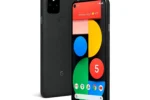T-Mobile Starlink satellite service is set to revolutionize the way we experience mobile connectivity. In a groundbreaking partnership with SpaceX, T-Mobile aims to bridge the connectivity gap in over 500,000 square miles of the United States that traditional cellular networks can’t reach. This innovative satellite connectivity will allow smartphone users to access reliable cellular coverage in remote areas like national parks and uninhabitable deserts, where cell towers are absent. Not only does this service enhance everyday communication, but it also provides a vital safety net for travelers in emergencies. With T-Mobile Starlink, your smartphone becomes a satellite-enabled device, ensuring you stay connected wherever life takes you.
The T-Mobile and SpaceX collaboration is a game changer for mobile communication technology. This satellite-based system, branded as T-Mobile Starlink, promises to deliver cellular connectivity where conventional networks have failed to establish coverage. By utilizing advanced satellite technology, including Direct-to-Device capabilities, users can expect improved access even in the most challenging terrains. The implications of this partnership extend beyond just enhanced service; they also include critical emergency connectivity options for those navigating through less populated regions. As T-Mobile Starlink rolls out, it sets a new standard in the realm of smartphone satellite communications.
Understanding T-Mobile Starlink Satellite Connectivity
T-Mobile’s Starlink satellite service is a groundbreaking collaboration between T-Mobile and SpaceX aimed at enhancing cellular connectivity across the United States. This innovative service utilizes low-orbit satellites to bridge the connectivity gap in remote and underserved areas where traditional cellular networks have failed to reach. By leveraging satellite technology, T-Mobile Starlink promises to deliver reliable service over vast stretches of land, including national parks and mountainous regions, where cellular towers are often impractical or impossible to install.
The integration of satellite connectivity into smartphones is a game-changer for users. Unlike traditional satellite phones, which require specialized devices, T-Mobile’s Starlink service is designed to work seamlessly with existing 5G smartphones. This means that millions of users will have access to emergency connectivity without needing to purchase additional equipment. As a result, users can expect to send text messages and, eventually, make calls, providing a vital communication lifeline in emergencies.
The Impact of the SpaceX Partnership on Cellular Coverage
The partnership between T-Mobile and SpaceX represents a significant shift in how cellular coverage can be expanded. With over half a million square miles of the U.S. lacking cell signal, the collaboration aims to fill these gaps using advanced satellite technology. SpaceX’s Starlink satellites, positioned over 200 miles above Earth, can reach areas where traditional cellular infrastructure cannot, thus providing essential connectivity for users in isolated regions.
This partnership not only enhances connectivity but also promotes safety for individuals traveling through remote locations. With T-Mobile Starlink, users can remain connected during emergencies, ensuring that help is just a message away. Moreover, the ability to utilize existing smartphones means that this service can be quickly adopted, making it a practical solution for those who frequently venture into less populated areas.
Exploring the Benefits of Satellite Connectivity
The benefits of T-Mobile’s satellite connectivity are manifold, particularly for those who frequently travel or work in remote locations. Users can send text messages, including multimedia content, even when they are far from cell towers. This capability ensures that individuals can stay in touch with loved ones or emergency services during critical situations. Access to satellite connectivity can be a lifesaver in wilderness areas, where traditional cell signals are often absent.
Another significant advantage is the potential for future expansions in service offerings. T-Mobile intends to enhance its satellite capabilities to include voice and data connectivity, which would transform how users interact with their devices in remote areas. As developers optimize their applications for this satellite network, the range of services available will only grow, further bridging the connectivity divide.
Getting Started with T-Mobile Starlink Satellite Services
To begin using T-Mobile Starlink satellite services, interested customers can sign up for the beta testing program, which is currently open to all users, including those on AT&T and Verizon networks. The beta phase is set to last until July 2025, allowing users to experience satellite connectivity at no additional cost if they subscribe to T-Mobile’s Go5G Next plan. This inclusive approach means that even non-T-Mobile customers can access the service, providing them with greater flexibility.
After the beta period, T-Mobile plans to offer satellite connectivity for a monthly fee, with discounts available for early adopters. This pricing strategy ensures that users can remain connected without incurring excessive costs, making satellite connectivity accessible to a broader audience. The transparency in pricing and subscription options further enhances user confidence in adopting this new technology.
How T-Mobile Starlink Enhances Emergency Connectivity
One of the most critical aspects of T-Mobile Starlink satellite connectivity is its ability to provide emergency services in areas lacking traditional cellular coverage. In situations where individuals may find themselves stranded or facing natural disasters, the ability to send a text message via satellite can be vital. This feature empowers users to call for help and stay informed, significantly improving safety in remote locations.
Moreover, T-Mobile’s commitment to ensuring that users can access satellite connectivity without needing a dedicated device ensures that more people can benefit from this service. As the reliance on smartphones for communication continues to grow, the integration of satellite technology into these devices marks a significant advancement in emergency preparedness and response capabilities.
The Future of Cellular Coverage with Satellite Technology
The future of cellular coverage is being reshaped by the integration of satellite technology, particularly through innovative services like T-Mobile Starlink. As more users become aware of the capabilities of satellite connectivity, we can expect a surge in demand for these services. The combination of T-Mobile’s extensive network and SpaceX’s satellite technology sets a precedent for future collaborations and advancements in telecommunications.
Furthermore, as satellite technology continues to evolve, we may witness enhancements that allow for even greater data speeds and reliability. This could lead to improved user experiences across various applications, from social media to emergency communications. The potential for satellite connectivity to complement existing cellular networks could revolutionize how we connect, especially in less accessible areas.
How T-Mobile Starlink Benefits Rural and Underserved Areas
T-Mobile Starlink is poised to make a substantial impact on rural and underserved areas where traditional cellular networks have historically fallen short. By providing a reliable connection through satellite technology, T-Mobile enables residents in these regions to access essential communication services that were previously unavailable. This development can lead to improved quality of life, as residents gain the ability to connect with others, access online resources, and engage in digital commerce.
Moreover, the introduction of T-Mobile Starlink can contribute to bridging the digital divide that affects many remote communities. With enhanced connectivity, educational opportunities can expand, allowing students in rural areas to participate in online learning. Similarly, local businesses can thrive with better access to customers and resources, ultimately fostering economic growth in these regions.
The Role of Direct-to-Device Technology in Satellite Services
Direct-to-Device (D2D) technology is at the heart of T-Mobile’s Starlink satellite service, enabling smartphones to connect directly to satellites without the need for intermediary devices. This technological innovation simplifies the user experience, allowing for seamless integration into existing networks. As a result, subscribers can enjoy satellite connectivity as a natural extension of their current cellular service.
The successful implementation of D2D technology represents a significant milestone in telecommunications. It not only enhances accessibility for smartphone users but also sets the stage for future advancements in satellite connectivity. With the potential for real-time communication and reduced latency, D2D technology could redefine how users interact with their devices in both urban and rural settings.
T-Mobile Starlink’s Competitive Edge Against Traditional Carriers
T-Mobile Starlink’s satellite service offers a competitive edge over traditional cellular carriers by addressing connectivity challenges in remote areas. While AT&T and Verizon have extensive networks, they still struggle to provide coverage in hard-to-reach locations. T-Mobile’s strategy of leveraging satellite technology allows it to fill these gaps and offer users a unique service that traditional carriers cannot match, particularly for those who frequently travel off the beaten path.
This competitive advantage not only positions T-Mobile favorably in the telecommunications market but also encourages other carriers to explore similar partnerships and innovations. As satellite connectivity becomes more mainstream, users will increasingly seek providers that can offer reliable service in all terrains, making T-Mobile Starlink a compelling option for consumers looking for comprehensive coverage.
Exploring the Cost of T-Mobile Starlink Satellite Services
Understanding the cost structure of T-Mobile Starlink satellite services is crucial for potential users. During the beta phase, the service is offered at no additional charge to T-Mobile customers, making it an attractive option for those looking to explore satellite connectivity without financial commitment. After the beta period, T-Mobile plans to implement a reasonable monthly fee, which provides users with flexibility and control over their expenses.
The pricing strategy, which includes discounts for early adopters, reinforces T-Mobile’s commitment to making satellite services accessible to a diverse user base. By offering competitive rates, T-Mobile Starlink not only caters to existing customers but also attracts users from rival carriers, ultimately expanding its reach in the market.
Frequently Asked Questions
What is the T-Mobile Starlink satellite service and how does it work?
The T-Mobile Starlink satellite service is a collaboration between T-Mobile and SpaceX that utilizes low-orbit satellites to enhance cellular coverage across the U.S. This service allows smartphones to connect directly to Starlink satellites, providing connectivity in areas lacking traditional cell service. Using Direct-to-Device (D2D) technology, users can send text messages and potentially access voice and data services in the future.
How can I use T-Mobile Starlink satellite service on my smartphone?
To use the T-Mobile Starlink satellite service, you simply need a compatible 5G smartphone. The service is designed to work with the majority of existing smartphones, meaning no additional equipment is necessary. During the beta phase, users can sign up for free and access satellite connectivity in areas without nearby cell towers.
What areas are covered by T-Mobile’s Starlink satellite connectivity?
T-Mobile’s Starlink satellite connectivity covers over 500,000 square miles of the U.S., including remote regions such as national parks, deserts, and mountainous areas where traditional cellular coverage is unavailable. You can check the T-Mobile Starlink coverage map for specific locations.
What types of communication can I expect with T-Mobile’s satellite service?
With T-Mobile’s Starlink satellite service, users can currently send text messages, including picture messages. While voice and data connectivity are anticipated for the future, the current focus is on providing emergency connectivity and reliable text communication in underserved areas.
Is T-Mobile’s satellite service available to non-T-Mobile customers?
Yes, T-Mobile’s Starlink satellite service is available to all users, including AT&T and Verizon customers. During the beta testing phase, anyone can sign up for free, and after the beta period, non-T-Mobile customers can subscribe for a monthly fee to continue using the service.
How much will T-Mobile Starlink satellite service cost after the beta period?
After the beta testing ends in July 2025, T-Mobile Starlink will cost $15 per month, but early adopters can receive a discount, reducing the price to $10 per month. AT&T and Verizon users who wish to continue using the service will pay $20 per month.
What are the benefits of using T-Mobile’s satellite connectivity?
The primary benefits of T-Mobile’s satellite connectivity include extended coverage in remote areas where traditional cellular networks do not reach, emergency connectivity for users traveling through less populated regions, and the ability to use regular smartphones without needing dedicated satellite devices.
How does T-Mobile’s partnership with SpaceX enhance satellite connectivity?
T-Mobile’s partnership with SpaceX enables the use of low-orbit satellites to enhance cellular coverage. This collaboration allows for Direct-to-Device communication, making it possible for smartphones to connect directly to Starlink satellites, improving connectivity without the need for additional hardware.
Can I expect delays in message delivery when using T-Mobile’s satellite service?
Yes, users may experience delays in message delivery when using T-Mobile’s Starlink satellite service, especially if there are obstructions like trees or buildings. The service requires a clear view of the sky for optimal performance.
Will T-Mobile Starlink satellite service be available internationally?
T-Mobile is working with global roaming partners and SpaceX to potentially offer satellite services abroad and in international waters in the future, expanding the usability of T-Mobile Starlink connectivity beyond the U.S.
| Key Features | Details |
|---|---|
| Partnership Overview | T-Mobile and SpaceX collaborate to provide satellite connectivity using low-orbit satellites for existing smartphones. |
| Coverage Area | Covers over 500,000 square miles in the US, including national parks and remote areas without traditional cell coverage. |
| Connectivity Features | Users can send text messages, with future plans for voice and data connectivity. Messages may not be instant due to satellite delays. |
| Beta Testing | Currently in beta until July 2025, available to all users including AT&T and Verizon customers at no additional cost. |
| Pricing | Standard service costs $15/month, discounted to $10 for early adopters. Non-T-Mobile users can access it for $20/month. |
Summary
T-Mobile Starlink satellite service is revolutionizing connectivity by allowing smartphones to connect directly to satellites in space, providing coverage in previously unreachable areas. With a partnership between T-Mobile and SpaceX, users can expect enhanced cellular service across the United States without the need for specialized equipment. This innovative service not only ensures safety for those in remote locations but also offers a new level of convenience for users everywhere.






